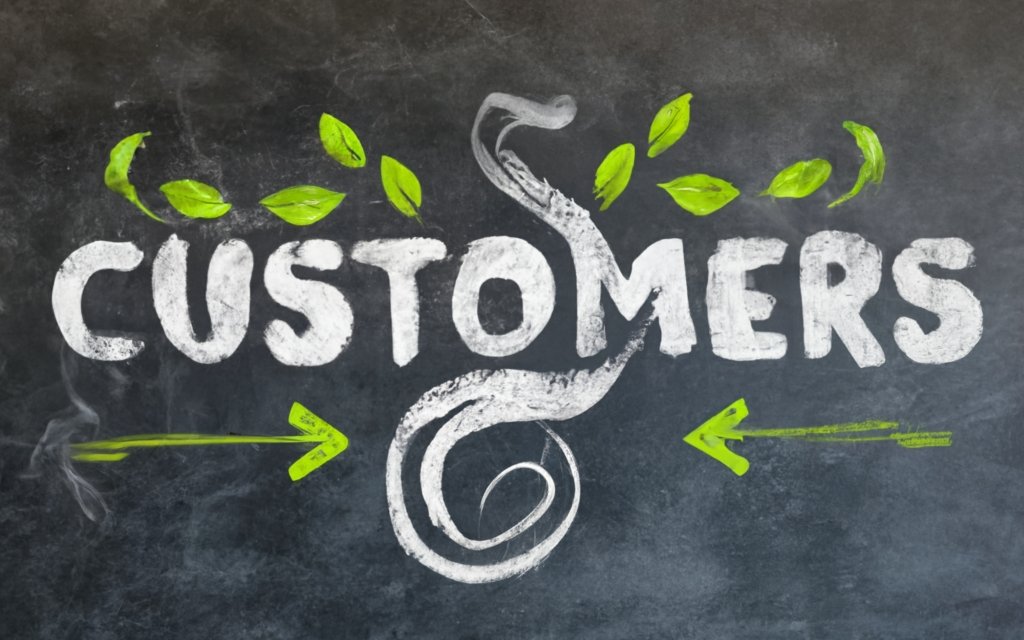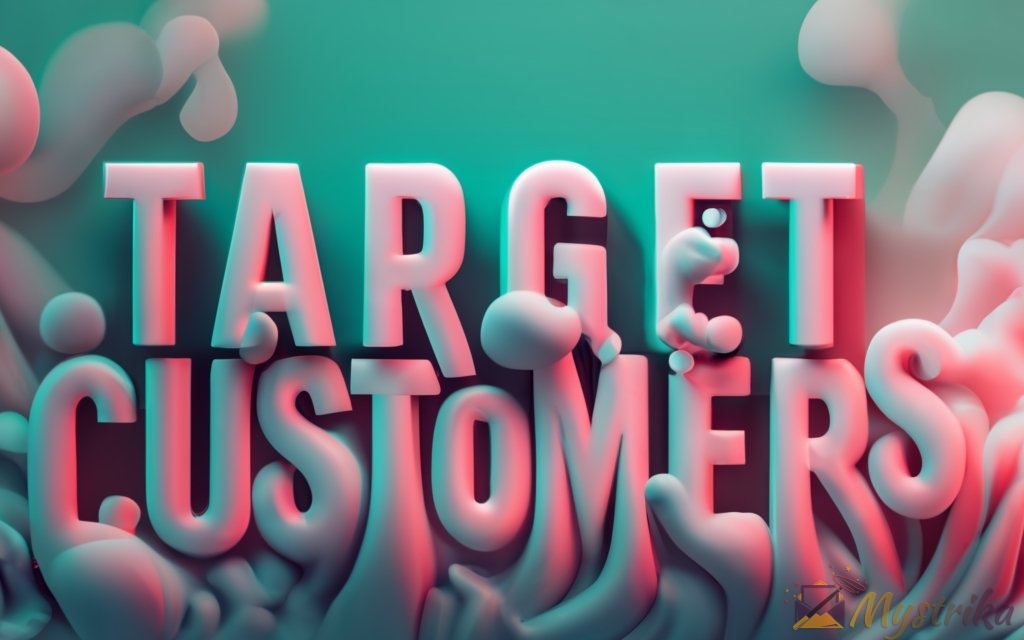Getting your first 10 customers is a massive hurdle for any new business. But cross it, and you’ll gain the momentum you need to soar. Follow this comprehensive guide to attract your first raving fans and evangelists.
Talk to People in Your Target Audience
Getting insights directly from your potential customers is like gold for validating your business idea. Before investing months of time and money into developing a product, have conversations to understand your audience’s pains, needs and desires.
Reach out to everyone you can in your target demographic through your personal and professional network. Set up short 15-30 minute phone calls or in-person coffees. Avoid asking leading questions so you get honest feedback. Prepare open-ended questions like:
- What challenges are you facing related to [your field]?
- How are you currently solving those problems?
- What would your ideal solution look like?
- What value would solving those problems bring you?
Take detailed notes during these customer discovery calls. Look for patterns in the problems they describe and get a sense for how much they’d truly value a solution.
For example, if you’re building team management software, chat with managers about their day-to-day struggles. If they keep mentioning time tracking and communication blockers, you’ll get confidence those features would resonate.

Run Surveys to Gauge Interest and Pain Points
Surveys are another excellent way to validate your business idea at scale. You can connect with hundreds of potential customers without 1:1 conversations.
Craft 10-15 multiple choice and short answer questions to quantify the demand for your concept. Post the survey in relevant communities like Facebook Groups and Reddit threads. You may consider running paid ads targeting your audience.
After a week or two, analyze the data for clear validations or invalidations:
- What % of people said they experience the key problem(s) you intend to solve?
- How much do they care about fixing those problems?
- What specific features or benefits are they most excited by?
- What might they be willing to pay if your solution existed?
For example, 75% may report that pain point X is very important to solve. Or 80% may be very likely to buy if they could get benefit Y.
Let the survey results steer your product vision and initial feature set. Build what potential customers tell you they want most.
Study Your Competitors to See What They Do Well/Poorly
Finally, immerse yourself in competitors and alternatives in the space. Sign up for free trials of their products. Read online reviews and join related communities to see Feedback. Take note of:
- What use cases or customers do they serve well? Where are gaps?
- What parts of the user experience work smoothly? Where does it fall short?
- How do customers perceive the brand? Cheap? Premium? Unique value?
- What pricing models are used? How does the business monetize?
Doing this competitor analysis lets you design something superior. Learn from what they do well, while fixing the parts that frustrate customers.
The most successful new products don’t just copy competitors. They creatively deliver something better suited to user needs. Let your learnings guide you. Don’t blindly build what’s already out there.
Getting out of the building to gather first-hand data from potential users, running surveys, and deeply understanding the competitive landscape are key steps to validate your new business idea. This market research sets you on the right path before major product investments. Pivot quickly if needed before it gets expensive.
Focus on Core Features That Solve Main Customer Needs
Resist the temptation to build every feature under the sun in your initial product release. This MVP approach ensures you launch something quickly that solves the core jobs-to-be-done for customers.
Revisit the validated learnings from your market research phase. Prioritize developing the 2-3 features that were consistently highlighted as most important during customer interviews and surveys.
For example, if you’re creating marketing automation software, the MVP might just have email campaign creation, contact management, and basic reporting.
Leave advanced features like SMS campaigns, Landing page builders, or predictive analytics for later. Stick to the 20% of functionality that will satisfy 80% of user needs right now.
The brilliance of the MVP is focusing on the smallest set of features that make the core value proposition work. Anything non-essential dilutes your time and resources.
Use Lean Methodology to Launch Basic Product Quickly
With a razor-sharp understanding of the minimal features required, adopt lean product development principles to accelerate getting your MVP to market.
- Prioritize speed in product cycles – Release something in weeks/months, not years
- Embrace agile development – Ship iterative versions in sprints
- Simplify designs first – Avoid complex architectures upfront
- Engineer just enough – Build for today’s needs, not unknown future ones
- Automate relentlessly – Reduce manual processes that slow you down
- Partner where possible – Leverage APIs/libraries vs. building from scratch
Taking this agile approach allows you to release a basic product solving real problems much faster than overengineering upfront. The goal is get your MVP in users hands ASAP.
Get Product In Customers’ Hands ASAP for Feedback
Once you’ve built your initial MVP prototype, it’s time to get it in front of actual customers for feedback.
Recruit 5-10 people from your target audience who expressed interest during market research. Offer free access in exchange for honest product reactions.
Schedule 30-60 minute User Testing calls. Have them walk through core workflows while you observe pain points. Ask probing questions like:
- Was this feature easy or confusing to use?
- What additional capabilities would you need to solve X?
- How likely would you be to recommend this to a colleague?
Thank them for the feedback, then rapidly incorporate needed tweaks. Fix blockers preventing them from getting value.
Keeping your MVP simple allows collecting user input quickly to steer product direction. Those insights are invaluable before additional development.
Resist the temptation to build something perfect. Get the core 20% out to early adopters, then use their feedback to iterate. This Build-Measure-Learn approach is the fastest way to an MVP that resonates.

Define Your Brand Story, Mission, Vision
Before promoting your product, take time to define your brand story and reason for existing. This gives customers something memorable to connect with.
What origins led you to start this company? What greater purpose beyond profits drives you? Share an authentic backstory that ignites emotion in who you are and what you stand for.
Also craft an inspiring mission and vision. A mission explains what you do everyday. A vision is the long-term change you hope to create in the world.
For example, TOMS Shoes’ mission is providing shoes to children in need. Their vision is a world where nobody suffers for lack of basic necessities.
Let your brand identity shine through in all customer touchpoints. Weave it into your messaging and content. Make sure your team lives these values daily.
Outline Your Unique Value Proposition
Clarify your unique value proposition (UVP) – the key differentiation that sets you apart from competitors.
Do you offer the lowest cost, highest quality, best experience, most selection? Get ultra specific on the exact problem you solve and why you’re distinctly better.
For example, Starbucks’ UVP is creating a “third place” experience between work and home where customers feel welcomed. Their cafes don’t just sell coffee – they sell an uplifting community atmosphere.
Keep your UVP clear and prominent in all materials. This gives customers a compelling reason to choose you over alternatives.
Craft Messaging That Resonates With Target Customers
With your brand essence defined, build messaging that truly resonates with your audience.
Study how your buyers talk about challenges in their own words. Use similar terminology in your content and positioning. Empathize with their pains to show you understand them deeply.
Highlight specific outcomes they’ll get from your solution. For example, “Our software will save you 10 hours a week on operations so you can focus on strategic projects.”
Weave in social proof of success stories from early adopters. For example, “Company X cut costs by 30% in 3 months with our platform.”
Test different messages with customers. See which earn the most positive reactions and spur the most interest in trying your product.
Effective brand messaging makes prospects feel seen and understood. It paints a vivid picture of how you’ll improve their lives for the better. Lean into your authentic origin story, UVP, and customer-centric voice as the core of your communications.
Make Sure Your Site Instills Trust And Credibility
Your website is often the first impression prospects have of your brand. It needs to immediately establish legitimacy and authority.
Some key elements for a trustworthy site:
- Fast load speeds – Nothing hurts credibility like a slow site. Optimize images, minify code, and leverage a CDN to deliver content quickly.
- Mobile responsiveness – Over 60% of traffic is from mobile devices. Ensure a seamless experience on phones and tablets.
- SSL encryption – Add an SSL certificate so your site loads over HTTPS. This shows security.
- Compelling About Us page – Share your origin story, team bios, values and achievements to humanize your brand.
- Customer logos and testimonials – Prove your track record of success with recognizable company names and glowing reviews.
- Easy contact options – Provide phone, email and live chat to show you’re eager to speak with visitors.
- Professional design – Invest in quality templates, photos and branding that feel polished and credible.
Continuously optimize your site to build trust at every digital touchpoint. This convinces prospects you have the expertise to deliver results.
Emphasize Benefits And Solutions Over Features
A common mistake startups make is pitching “what” their product is versus “why” it matters.
Instead of rattling off a list of features, shift the focus to the customer problems you’ll solve. Communicate the tangible outcomes and benefits they’ll gain.
For example, rather than saying “Our software has customized reporting dashboards,” say “Our software helps you make smarter business decisions with customized reporting dashboards.”
Lead with the headaches you’ll alleviate and goals you’ll help accomplish. That resonates far more than generic features.
Include Calls-To-Action For Conversions
Calls-to-action (CTAs) are buttons or links prompting visitors to take a desired action. Strategically placing these can increase conversions.
Some top CTAs to test on key pages:
- Start Free Trial – Allow users to experience value before paying
- Request Demo – Book sales call to overview product benefits
- See Pricing – Make plans and pricing visible to instill trust
- Download Ebook – Offer lead magnet in exchange for contact info
- Schedule Consultation – Get discussion on specific use case
Track conversion rates by page and CTA type over time. Double down on what works and eliminate ineffective CTAs.
Crafting an authoritative website that speaks directly to customers’ needs – then guiding them to convert through strategic calls-to-action – is key for getting early traction. Optimize these elements to make a stellar first impression.

Share Valuable Content to Attract Ideal Prospects
Social media allows you to reach your target audience where they’re already active online. Share relevant and useful content to attract their attention.
Identify 2-3 primary platforms your buyers use, like Twitter, LinkedIn and Facebook. Curate and create content optimized for engagement on each network.
Types of helpful content to produce:
- Blog posts and videos explaining key industry topics
- Infographics, ebooks and whitepapers with actionable takeaways
- Polls and discussions related to their pain points
- Case studies and testimonials proving your value
Promote this content natively on social platforms and amplify through paid ads. Iteratively hone your messaging and creative assets based on response.
Participate in Relevant Social Conversations
Beyond just broadcasting your own content, actively engage with social conversations in your industry.
Monitor relevant hashtags and keywords to find questions you can help answer. Provide thoughtful replies that demonstrate your expertise.
Join existing Facebook and LinkedIn groups where you can provide insights. Make sure to avoid overt self-promotion. Focus on being helpful first and building community rapport.
This authentic engagement builds authority and trust. As prospects see you consistently adding value, you become a trusted resource worth following.
Run Contests and Promotions to Build Awareness
Contests, giveaways and exclusive promotions create buzz around your brand. Partner these with your social presence to maximize reach.
For example, run a “Share and Win” contest for a free 1-year subscription. Or offer a limited-time discount code exclusive to your email/community subscribers.
Promote these opportunities across your social channels, via paid ads, and through influencer partnerships.
Make the signup/entry steps quick and frictionless. Then deliver on the promised rewards.
Done right, promotions leverage social platforms’ viral nature at low cost. Just be sure the investment pays back in long-term customer lifetime value.
Wielding social media’s expansive reach and networks multiplies your marketing. Meet your audience where they already spend time online with value that earns attention.
Research Keywords Prospects Are Searching
Start with understanding what keywords and phrases your target customers are typing into Google around your offerings.
Use free tools like Google Keyword Planner and SEMrush to discover most-searched terms related to:
- The problem(s) you solve
- Your product/service types
- The outcomes and benefits you provide
Look for keywords getting significant search volume and low competition. This reveals opportunities to rank high and get found.
Create SEO-Friendly Content That Ranks For Those Terms
With your key terms identified, create written and visual content optimized to rank for each.
Incorporate keywords naturally into headings, opening paragraphs, image titles/descriptions, and URL slugs. Avoid over-stuffing.
Craft compelling headlines that make searchers want to click. Provide genuine value within your content so visitors stay and convert.
Publish blog posts, guides, videos, infographics and other media targeting these terms. The more content the better.

Optimize Your Site For Conversions, Not Just Traffic
Driving search traffic alone doesn’t grow your business – converting visitors into customers does.
Make sure your website provides a seamless experience guiding visitors towards becoming buyers.
Some best practices:
- Clear calls-to-action and onboarding flows
- Frictionless checkout and payment processes
- Compelling product/service pages with pricing/benefits
- Strong internal linking between related pages
- Concise, benefit-driven copywriting
- Fast load speeds and mobile optimization
Continuously improve site conversion rates by A/B testing page layouts, copy, offers and more.
SEO combines research to understand searcher intent, content creation to attract them, and conversion optimization to turn them into happy customers. Adopt these practices to boost inbound leads.
Give Ads a Shot
Test Facebook/Instagram Ads Targeted to Your Audience
Facebook and Instagram ads allow targeting users by location, demographics, interests and behaviors. Create highly targeted campaigns to reach your ideal customers.
You can start with as little as $5/day for each test campaign. Experiment with different audiences, placements and ad formats.
For example, if you have a yoga apparel shop, test:
- Targeting women interested in yoga, ages 25-40
- Placing ads in front of fitness content videos
- Using carousel image/video ads showcasing products
Track conversions from each campaign – like email signups, purchases, or app installs. Identify your most responsive customer segments and ad types to scale up.
Experiment with Google Ads and Remarketing
Google Ads similarly allows targeting users searching for relevant keywords and visiting related sites. It also enables “remarketing” to past visitors.
If someone comes to your website but doesn’t convert, you can show ads to them across Google and its network to nudge them back. Display reminders of what they were interested in.
Start with small daily budgets while testing keyword and audience targeting options. Measure conversions to see what messaging pulls visitors back most effectively.
Track ROI Closely to Optimize Spend
As you scale any paid advertising, diligently analyze return on investment (ROI).
Assign conversion values to each goal – like $X for a purchase or $Y for an email signup. Calculate spend and revenue data to determine true ROI.
Continuously pause ineffective ads and boost high performers. Improve targeting and creatives based on results over time.
With careful testing and ROI tracking, paid ads expand your reach and visibility with laser-focused precision. Drive more qualified traffic and sales at scale.
Identify Prospects Who Need Your Solution
Beyond inbound tactics, be proactive reaching out to potential customers directly.
Build lead lists identifying key decision makers to target:
- Visit competitor sites and gather their existing customer contact info
- Attend industry events and collect business cards from attendees
- Search LinkedIn for titles like “Director of Marketing” at companies in your vertical
- Buy targeted email lists from qualified list brokers
Prioritize leads who match your ideal customer profile and likely need your offering.
Send Personalized Emails and LinkedIn Messages
With your prospect list built, craft one-to-one personalized outreach.
Highlight specific pain points they likely experience which your product solves. Speak directly to how you can help them achieve goals.
Send brief cold emails and LinkedIn connection requests to introduce yourself and start a conversation. Be helpful and humble, not salesy.
Follow up promptly to set intro calls. Be ready to explain your value and listen to their needs.
Offer Free Trial or Discount to Incentivize
To turn leads into engaged users, provide incentives for signing up.
A time-limited free trial allows demonstrating your product’s value firsthand.
Discounts or “freemium” versions similarly reduce barriers to entry.
Just ensure you still collect contact info upfront to follow up afterwards to convert to paid plans.
Direct outreach with relevant, personalized messages cuts through the noise. Pair this with incentives to entice potential customers to experience your solution.
Wow First Customers to Get Reviews and Referrals
Don’t stop once customers sign up. Deliver incredible ongoing service experiences.
Surprise and delight first users with:
- Free 1-on-1 onboarding calls
- Custom setup assistance
- Branded swag/gifts thanking them
Go above and beyond to earn 5-star reviews. Then politely ask happy users to refer friends and colleagues.
Positive word-of-mouth is incredibly powerful marketing you can’t buy.
Ask for Feedback to Improve Product
Schedule user interviews and send feedback surveys to uncover areas for product improvement.
Dig into their challenges and frustrations. How can you make the experience smoother?
Implement tweaks and new features based on this input. Close the loop by following up on fixes made.
This shows customers you’re listening and committed to their success. They’ll reward you with loyalty.

Build Relationships Critical for Retention
Treat customers like valued partners beyond the sale. Foster personal connections with regular touchpoints:
- Check in on progress towards goals
- Celebrate milestones and feature wins in newsletters
- Wish them a happy birthday or holiday
- Send thoughtful gifts around major events
This relationship-building compounds, earning their continued business and advocacy for years to come.
Delivering incredible service cements customer commitment. Aim to inspire such delight that they’d never dream of leaving you.
Review Metrics to See What’s Working Well
Carefully track key metrics to identify what’s successfully driving customer acquisition.
Analyze data like:
- Traffic sources providing the most conversions
- Ad campaigns with the lowest cost per lead
- Highest performing landing pages
- Keyword and content bringing in buyers
Finding your most efficient customer acquisition channels is crucial. Double down on what works.
Double Down on Most Effective Strategies
With insights from your data, invest more in the strategies clearly producing results.
If social media ads are your top lead driver, allocate more budget there. If SEO content ranks well, create more of it. Build on strengths.
Continually optimize successful tactics too. Improve ad targeting, lower website bounce rates, tweak top-converting content. Wring out every drop of performance.
Test New Tactics to Efficiently Attract More Customers
Also continually test promising new strategies in small doses.
Try an Instagram influencer campaign, experiment with an ambassador referral program, build links to unlinked brand mentions – get creative.
Agile testing reveals tactics that augment existing successes. Expand channels providing strong ROI.
Analyzing performance and doubling down on winners rapidly grows customer acquisition. But always keep innovating and testing new angles too.
This data-driven refinement ensures you scale up customer acquisition in the most efficient, low-cost ways.
Key Takeaways
Attracting your first 10 customers is a critical milestone for any business. Follow these proven steps to set yourself up for success:
- Validate your idea through market research before you build anything. Talk to real potential customers and run surveys to confirm interest.
- Launch a minimum viable product with just the core features that early adopters need. Get it in their hands quickly to gather feedback.
- Create compelling brand messaging that highlights your unique value proposition. Craft content that resonates with your audience.
- Optimize your website to build trust and guide visitors to convert through clear CTAs. Emphasize benefits over features.
- Leverage social media to share valuable content that engages your niche. Participate in relevant conversations.
- Implement SEO best practices to get found for keywords your buyers are searching. Create content optimized for conversions.
- Run targeted paid ads to reach interested prospects beyond organic search. Continuously optimize for ROI.
- Reach out directly with personalized emails and messages to ideal potential customers. Offer free trials to incentivize signups.
- Provide incredible customer service to wow early adopters. Ask for referrals and feedback to improve.
- Analyze metrics and refine strategies to double down on what works. Test new promising tactics.
Following this structured blueprint will help you efficiently attract your first 10 customers, gain momentum, and set the stage for exponential growth.
Here are some common FAQs related to getting your first 10 customers:
Frequently Asked Questions
How do I determine my target customer?
Conduct market research through surveys, interviews, and examining competitors. Identify demographics, pain points, and needs your ideal customers share.
What metrics should I track?
Focus on conversion metrics like signups, trials, purchases, and repeat business. Track traffic sources, ROI for campaigns, and customer acquisition costs.
How much budget should I allocate to paid advertising?
Start small at $5-10 per day when testing new campaigns. Scale up ads delivering positive ROI. Budget will vary greatly by business model and margins.
What social media platforms should I focus on?
Research where your audience is most active. Tailor content for the top 2-3 networks they engage with. Most commonly effective are Facebook, Instagram, LinkedIn, and Twitter.
How do I create compelling content?
Study formats and topics that resonate with your niche. Provide truly useful insider tips and education – not just product pitches. Coordinate a content calendar for consistency.
What is the most important element of my website?
Your value proposition and messaging. Visitors must quickly grasp what problem you uniquely solve for them. Guide them towards conversion through prominently placed CTAs.
How do I incentivize signups?
Limited-time discounts or free trials are great for reducing friction and risk. Collect contact info upfront even if providing something for free.
Should I focus on acquiring more leads or optimizing conversion rates?
Optimize conversion rates first. More leads without improving conversions wastes effort. Only increase top-of-funnel spend once you have a strong customer conversion system.
How can I wow new customers?
Overdeliver with onboarding, support, and relationship building. Surprise them added value. Ask for reviews and feedback. Building loyalty early pays off.

